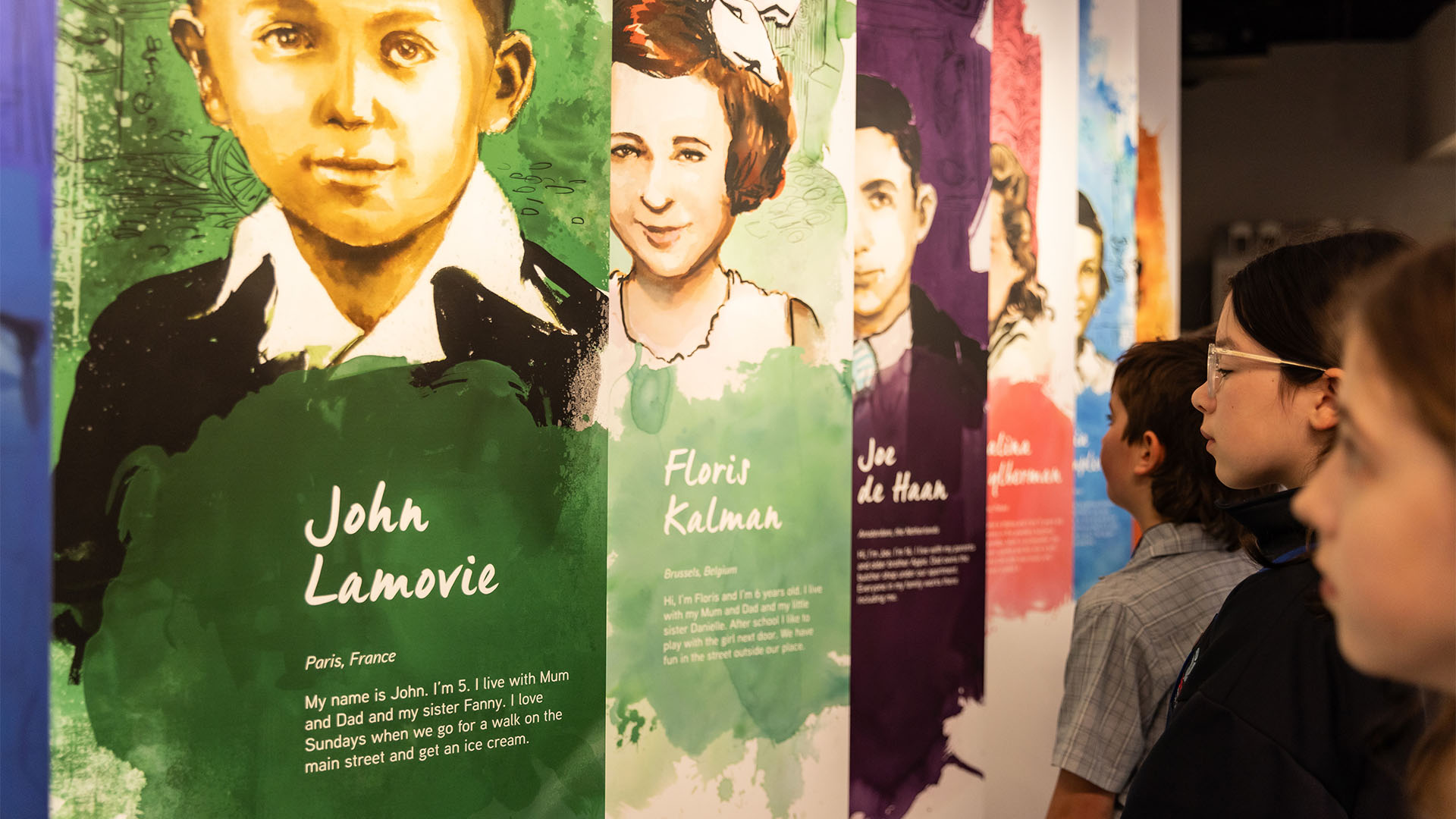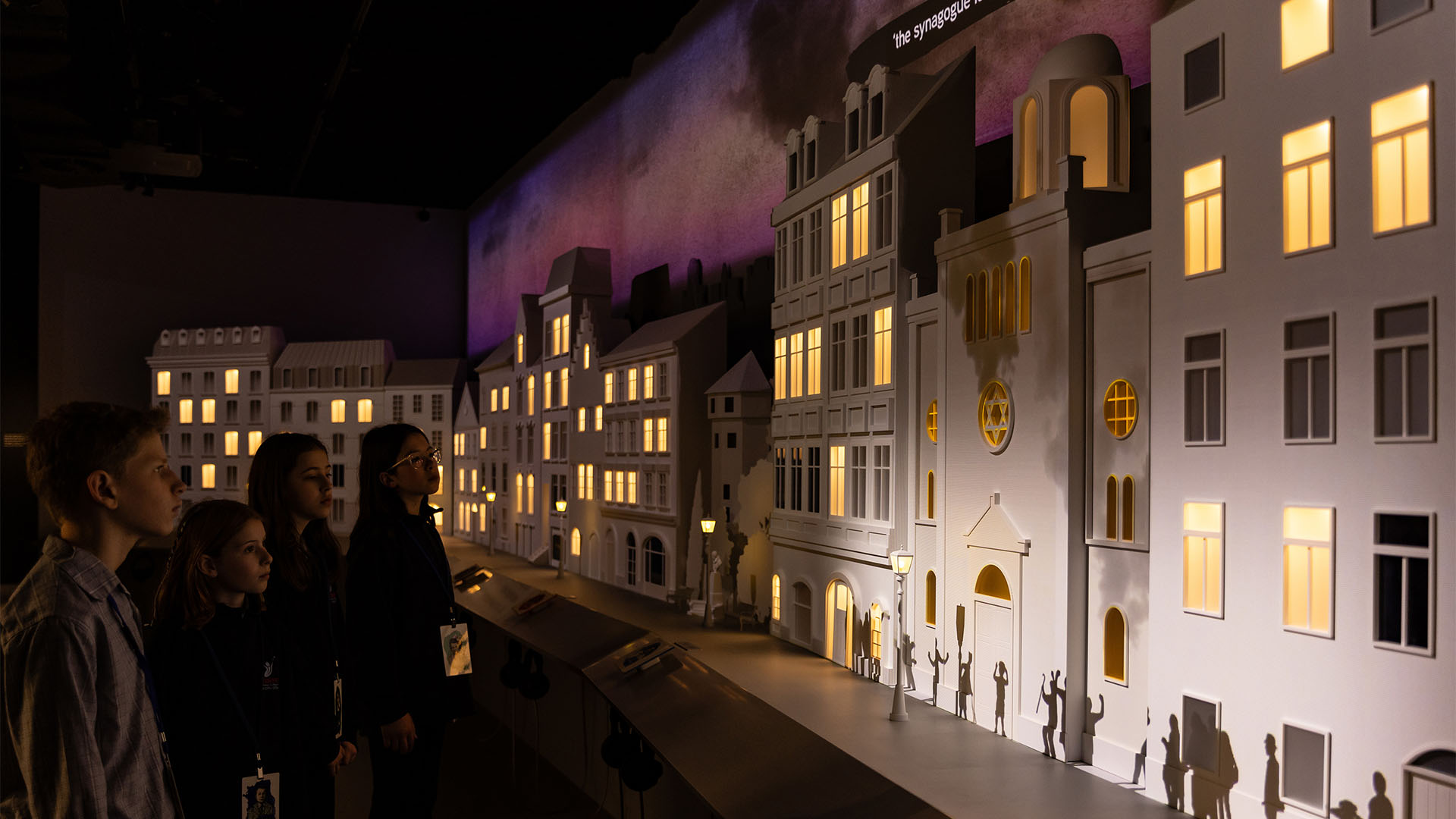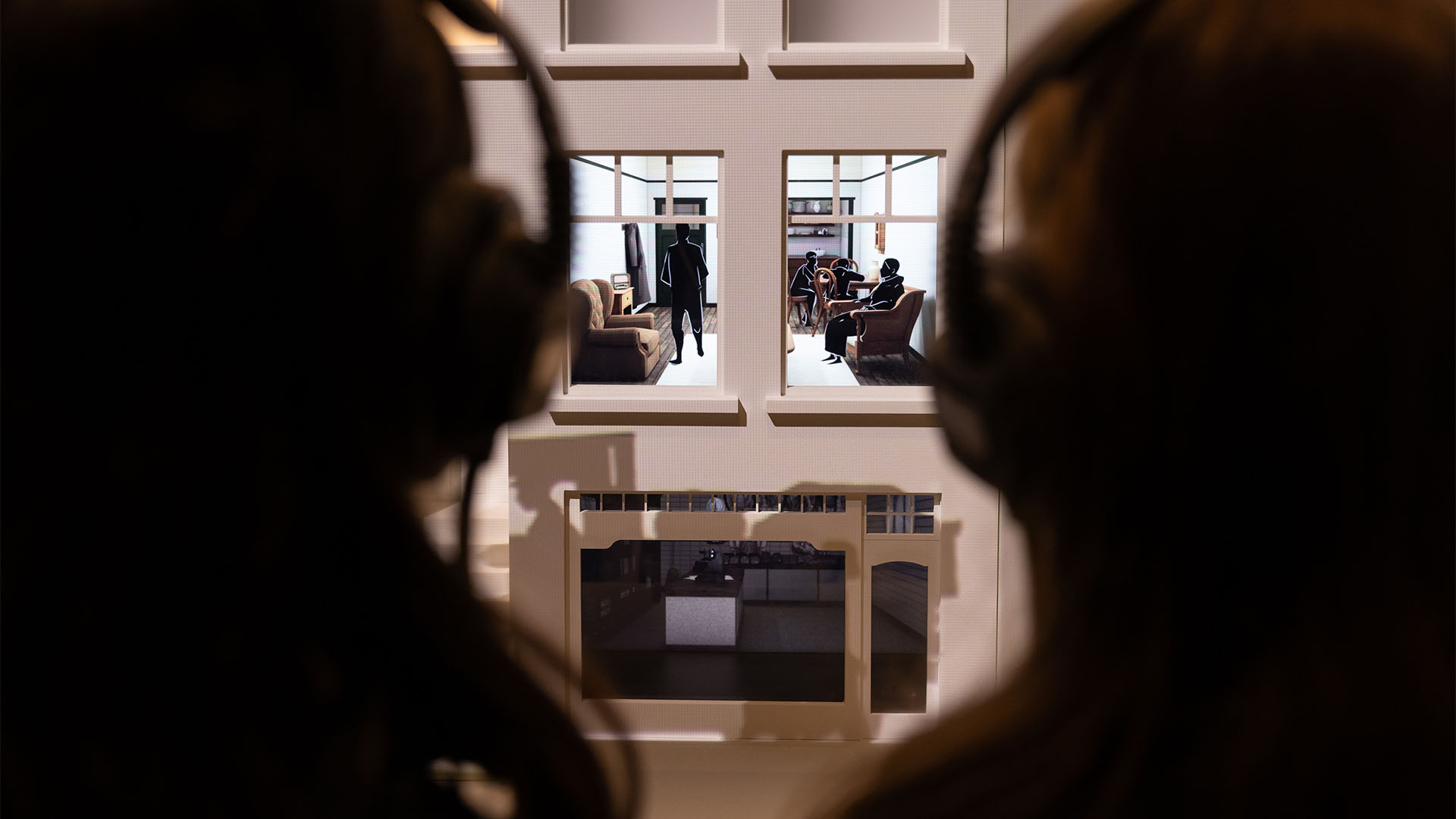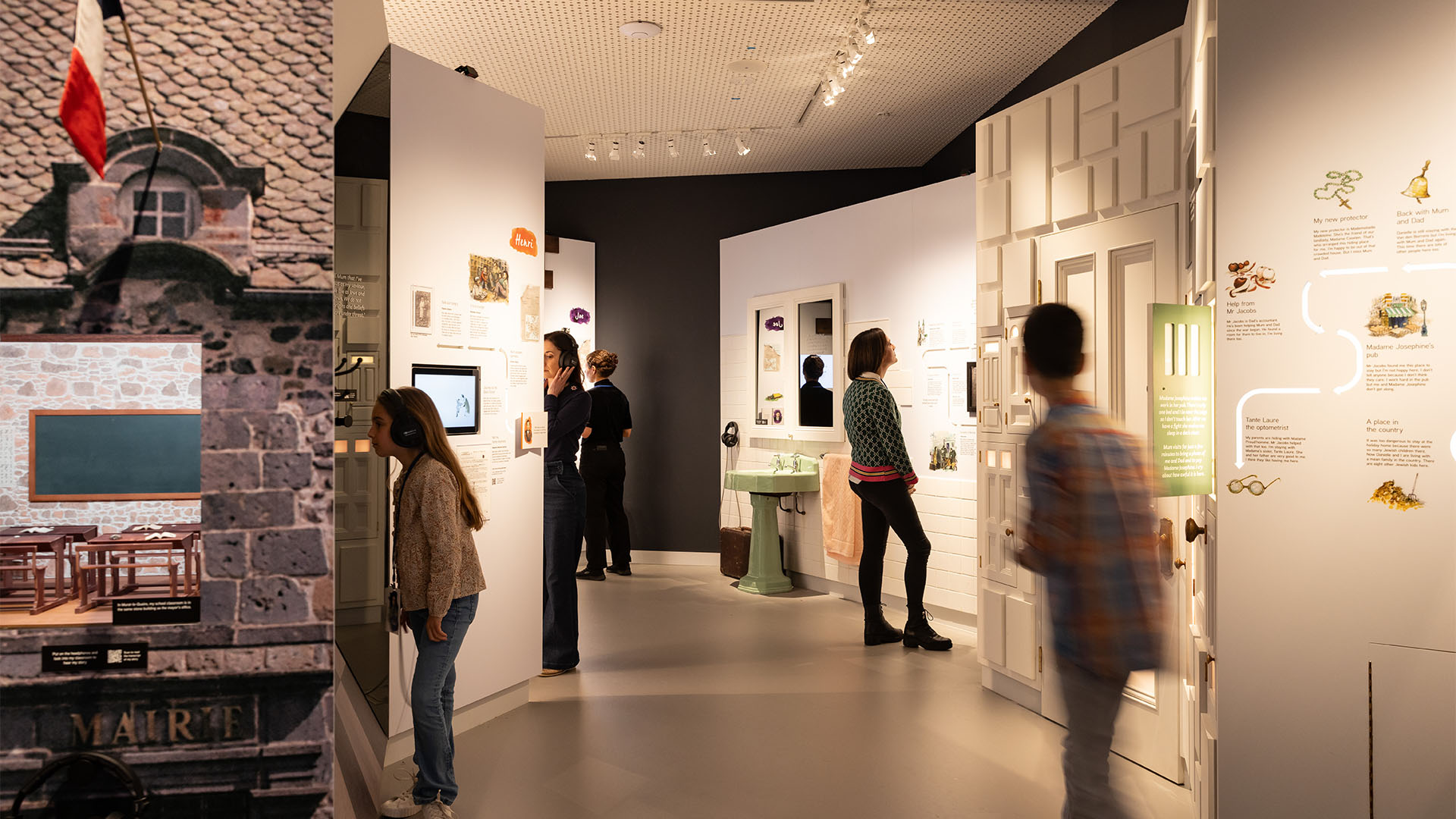Hidden: Seven Children Saved
‘Hidden: Seven Children Saved’ at the Melbourne Holocaust Museum (MHM) offers a poignant exploration of the Holocaust for 11-14-year-olds. This permanent exhibition narrates the journey of seven children who, having survived the horror of the Holocaust in hiding, started anew in Australia. Utilizing first-person storytelling and hands-on exploration, young visitors are guided through complex themes of prejudice and loss, hinging on acts of kindness as the north star, imparting universal lessons in empathy, compassion and courage to bridge historical events with modern life.
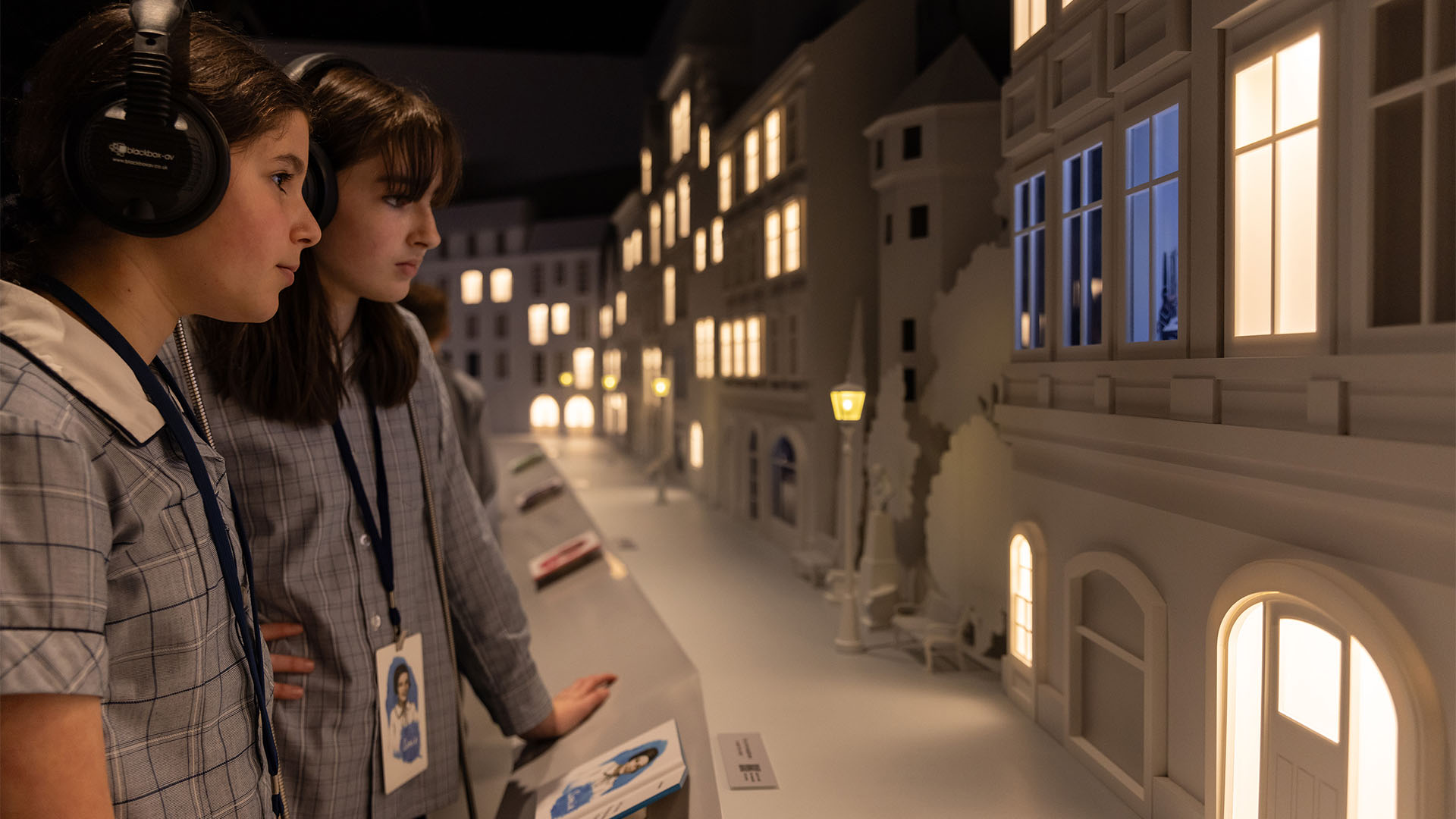
The Challenge
MHM’s brief was to craft an experience that respects history while inspiring hope within a compact 1000-sq-ft space that needed to accommodate tour groups of up to 60 students at a time. Joining the project mid-way through, we faced the challenge of integrating our design with a pre-existing structural layout and walls while aiming to foster a seamless visitor flow.
Project Vision
We sought to forge a personal connection between these survivors and the young visitors by centering on the extraordinary lives of Paul, John, Floris, Joe, Halina, Sonia, and Henri. Each child’s badge, given to students upon entry, serves as a key to unlocking these personal stories, tracing their journey from a peaceful pre-war existence through the terror of Nazi persecution during hiding to their liberation and eventual resettlement in Australia. Narrated by local youth, these stories aim to foster empathy and self-reflection, utilizing the ‘Safely In, Safely Out’ pedagogy to balance difficult storytelling with the well-being of the young visitors.
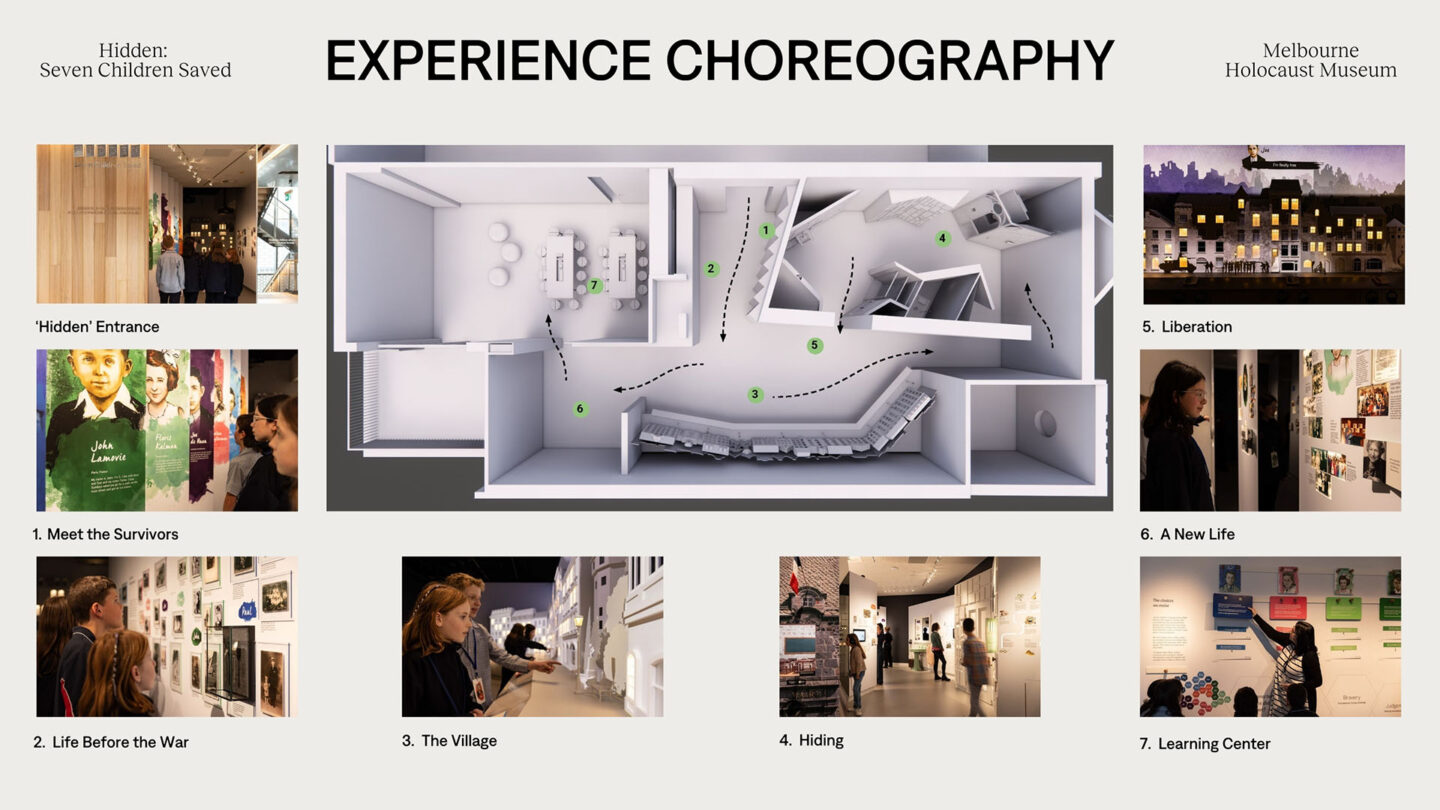
Meticulously crafted journey, akin to a wandering theatrical production, leads visitors through the harrowing and hopeful experiences of seven child survivors before, during, and after their escape from Nazi
persecution.
Photos: Mel Desa. Rendering: Art Processors
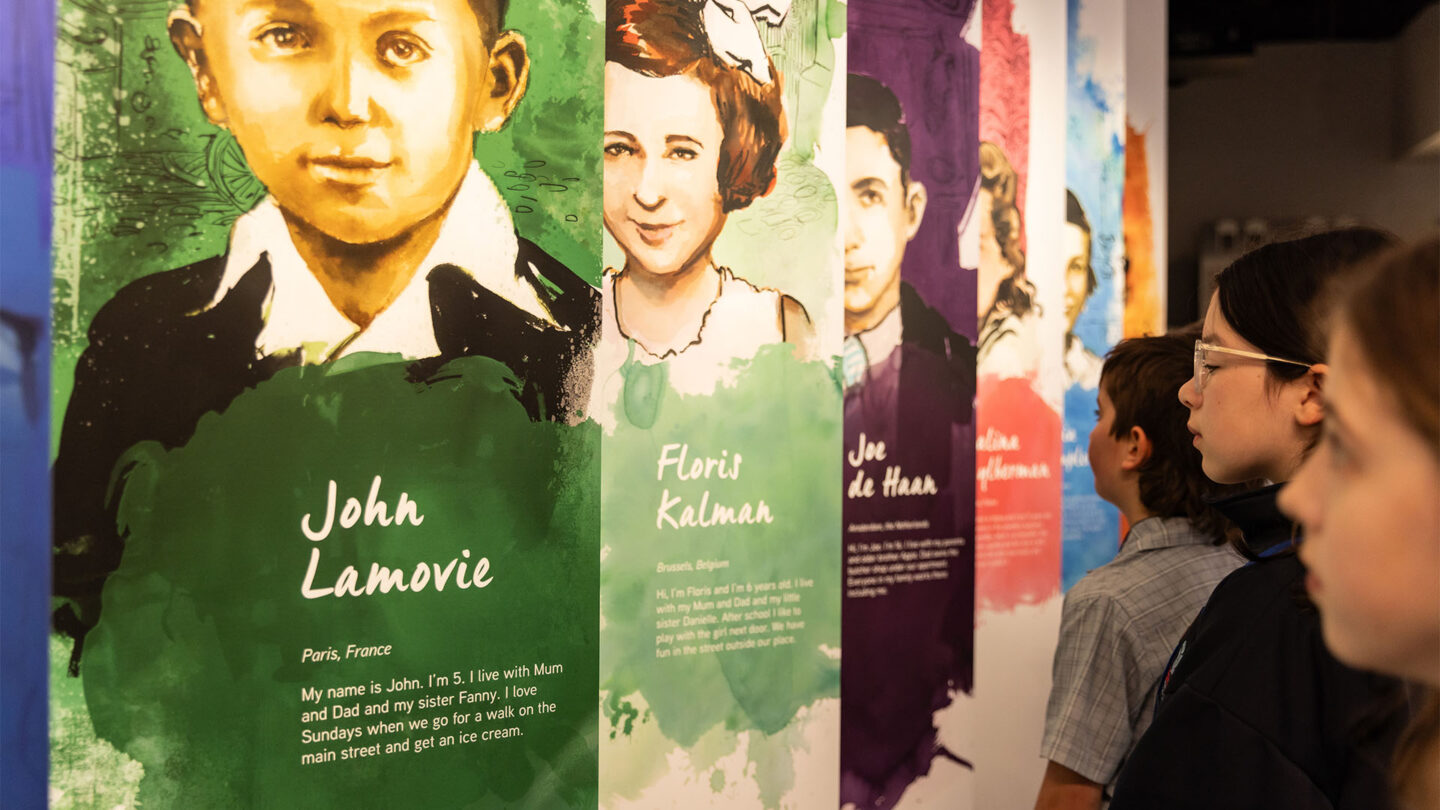
Upon entry, students encounter large-scale portraits of survivors Paul, John, Floris, Joe, Halina, Sonia, and Henri, fostering a direct, personal connection with the survivor’s story they’ll explore.
Mel Desa
Design + Execution
Our design approach echoes the museum’s architecture with spaces crafted to highlight a sense of light and hope. Leveraging MHM’s collection of first-person testimonies, personal artifacts and photographs, we orchestrated the visitor experience much like a wandering theatrical production. With thoughtful choreography to manage visitor flow, we crafted a captivating journey into the survivors’ stories through cinematic soundscapes, projection mapping, colorful illustrations, physical dioramas, and playful interactive spaces.
Upon entering, students are greeted by large-scale portraits, establishing a one-to-one connection with the child survivor they will accompany throughout the exhibit. On the facing wall, photos proudly displayed, like any collection of family photos, give a glimpse of the vibrancy and relatability of Jewish life before the war. Soundscapes depict children playing, a child’s birthday party, people laughing and sharing meals, prayer and song.
‘The Village’ represents Jewish communal life. A white diorama—complete with tiny streets and buildings evoking the architecture of Poland, Germany and France—serves as a canvas for storytelling, depicting life before, during, and after Nazi rule. A panoramic film alongside synchronized soundscapes breathes life into the village as projection-mapped silhouettes of residents gradually fade away, symbolizing worsening conditions under Nazi rule. Portraits on the back wall connect students with the home of their assigned survivor. The students peer through windows with headphones on to discover animated dioramas, narrated in the child’s voice, that vividly recounts the deepening crisis and provide a deeply personal window into their experiences.
In ‘Hiding,’ students navigate a compact maze of cubbies, closets, and corners, embodying the seclusion their survivor had to endure. Motion sensors and light-up cues activate as they open windows and doors to reveal hidden objects, secret sounds, and animations that narrate survivors’ stories of loss, risk, and bravery, emphasizing the acts of kindness that were key to their survival. Mirrors throughout alleviate space constraints while allowing the students to see themselves in the stories, fostering opportunities for reflection.
As students trace the survivors’ stories towards the end of the war and liberation, they are guided back to The Village. The projected animations depict scenes of reunions and grief, the families irrevocably altered, as the survivors make the heart-wrenching decision to leave Europe. The experience concludes with a look at their new lives in Australia and a thoughtful memorial wall of what was lost but will never be forgotten.
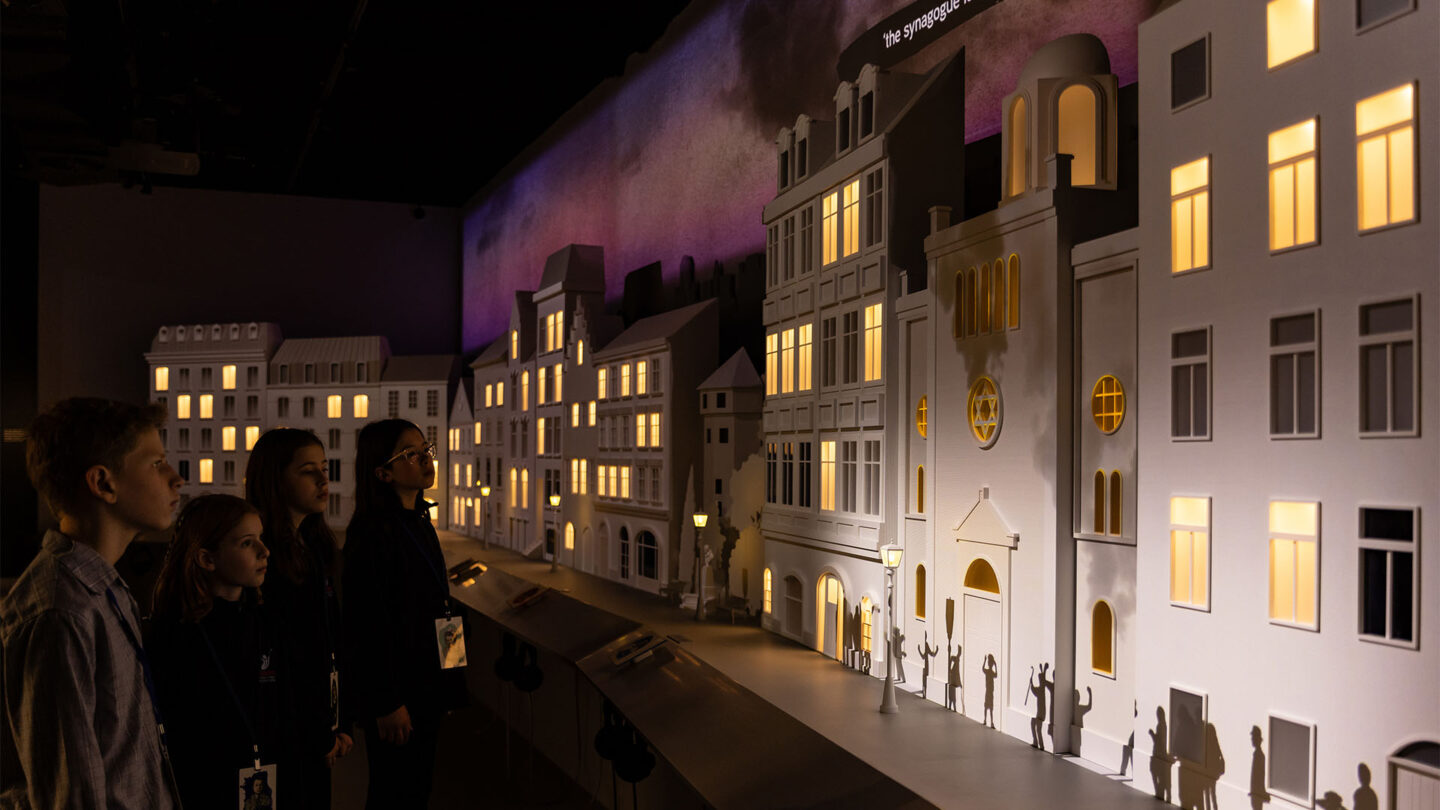
“The Village” diorama, showcasing pre-war Jewish life with streets and buildings, comes alive through a panoramic film, soundscapes, and fading human silhouettes, symbolizing the community’s decline under Nazi rule.
Mel Desa
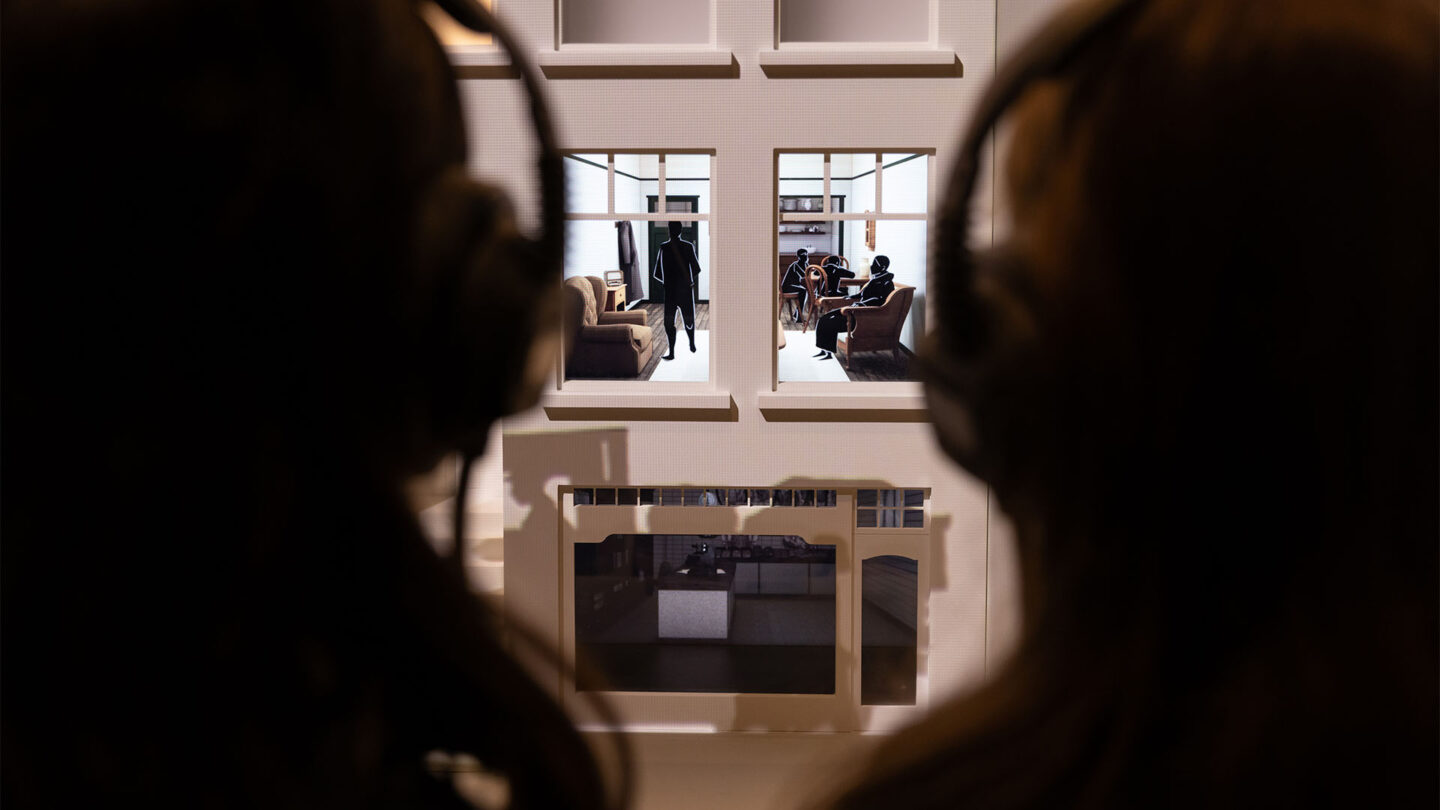
Portraits link students to their assigned survivor’s home. Peering through windows with headphones, they encounter animated dioramas narrated by the child, offering vivid, personal insights into the escalating crisis.
Mel Desa
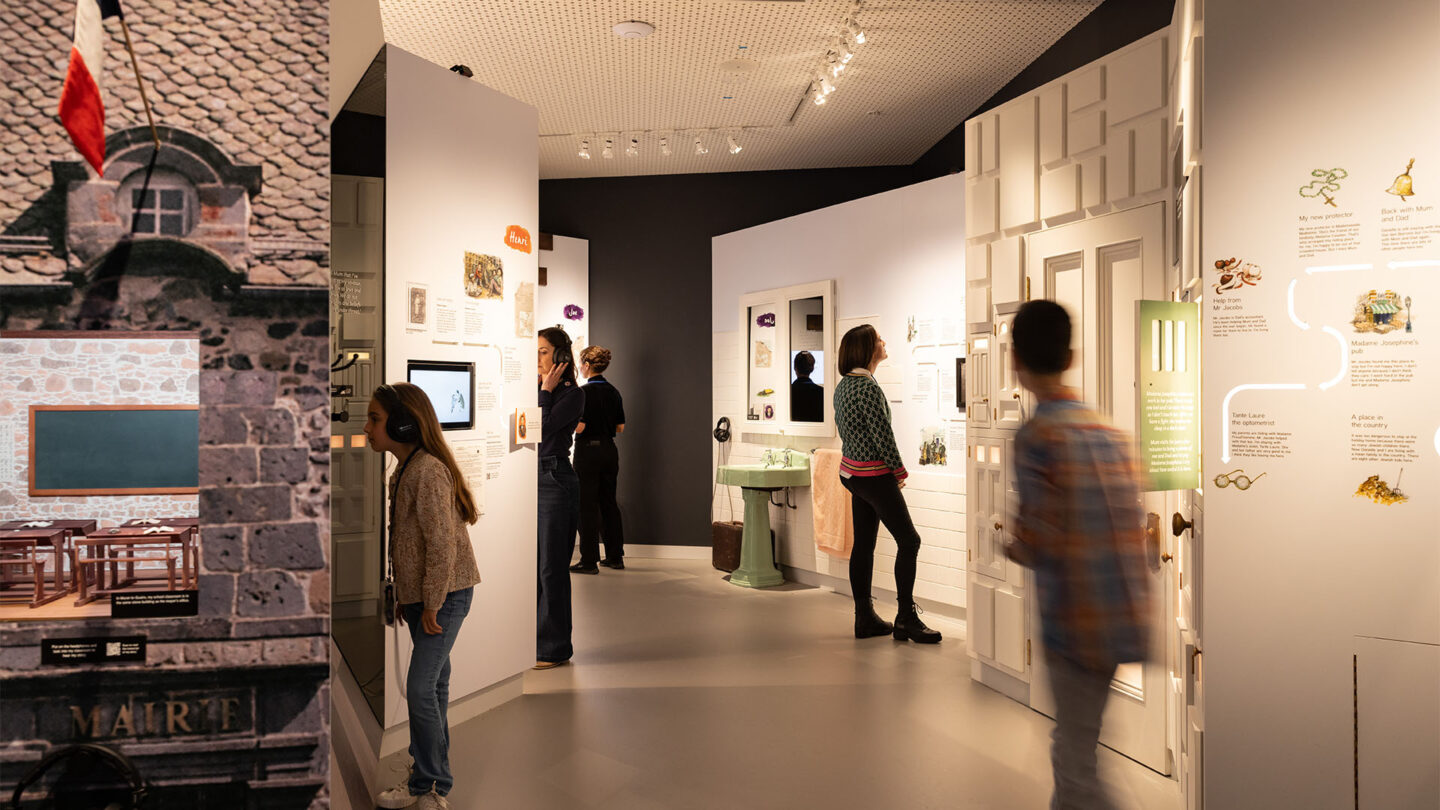
In the ‘Hiding’ gallery, the exhibition conveys the experience of life in seclusion during the war. A compressed space with a maze of small cubbies, closets, and corners to explore.
Mel Desa
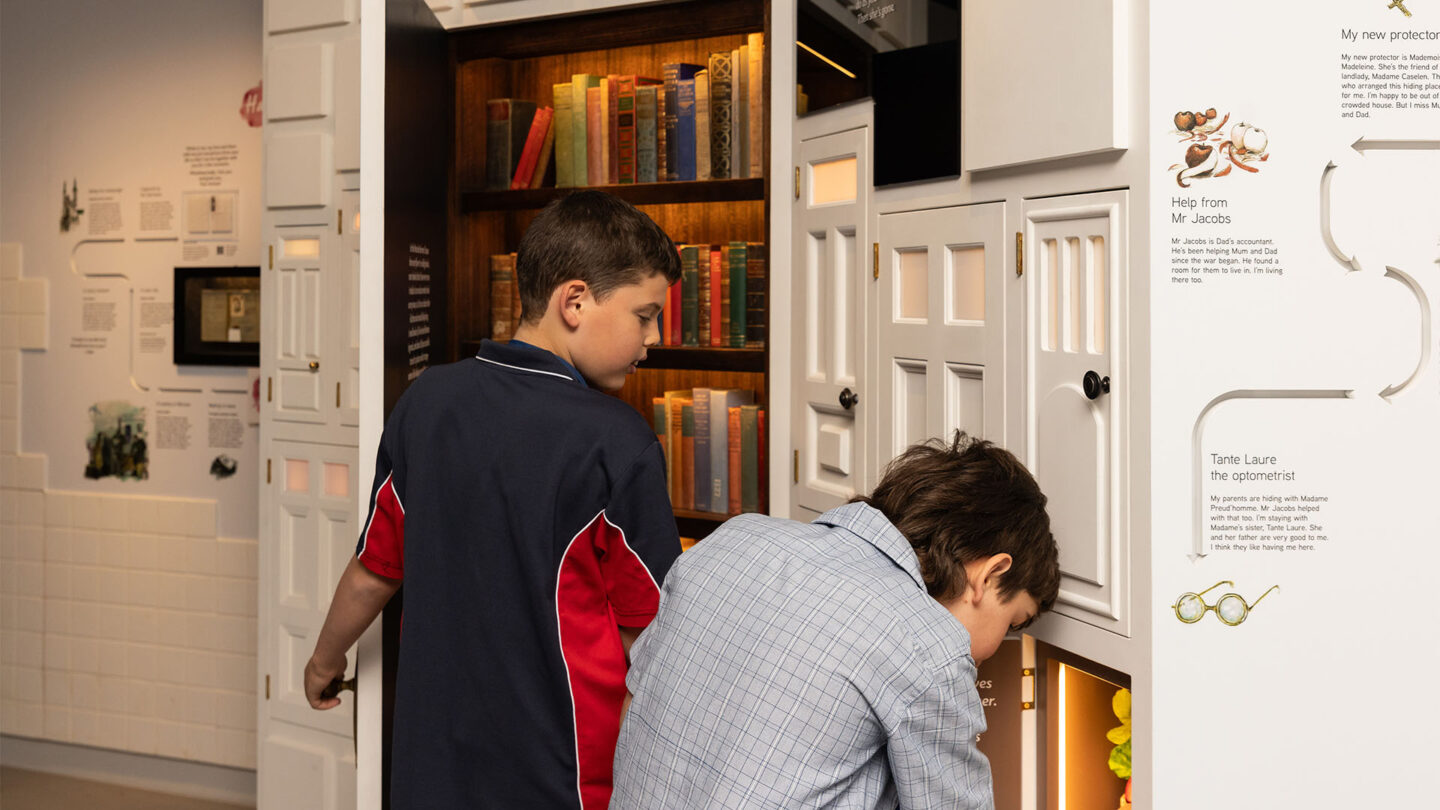
Opening windows and doors, they uncover hidden objects, secret sounds, and animated moments, each unveiling a unique survivor’s tale of loss, risk, and courage.
Mel Desa
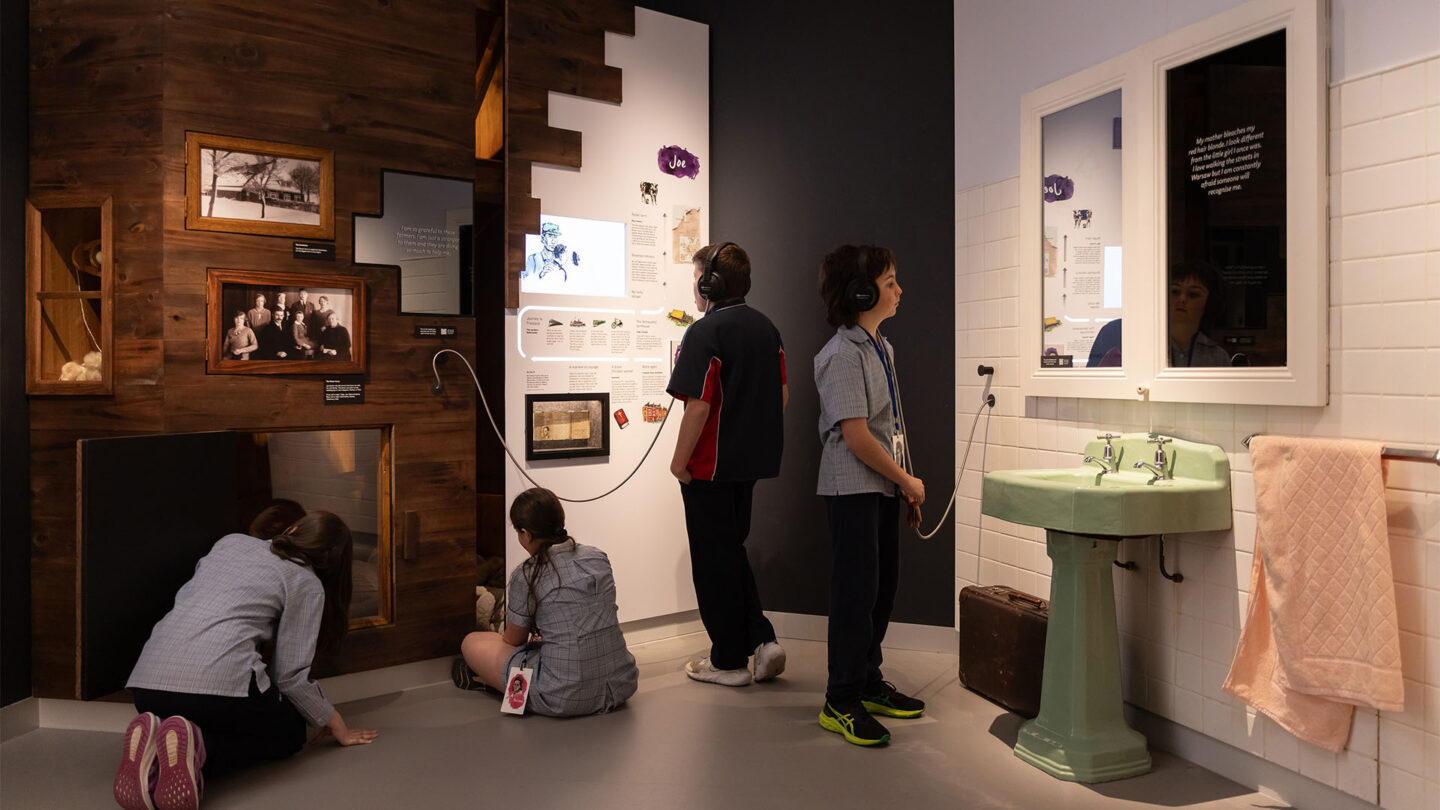
Motion sensors and light cues guide interactions, revealing hidden stories through objects, sounds, and animations. Mirrors double as storytelling surfaces, enabling reflection and personal identification with survivors’ journeys.
Mel Desa
Project Details
Design Team
Art Processor
Photo Credits
Mel Desa
Open Date
November 1, 2023

